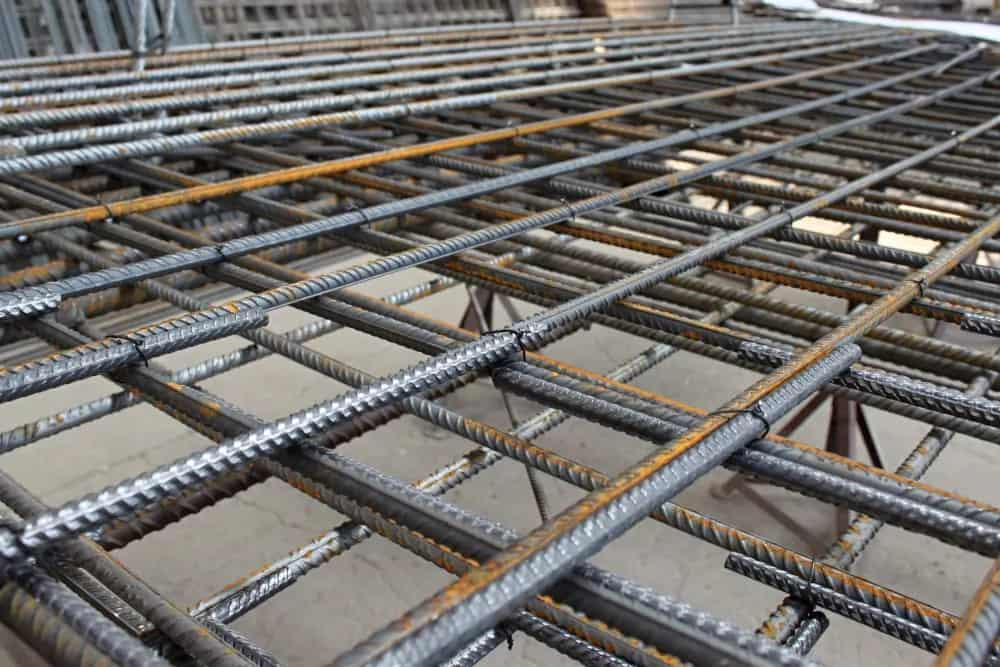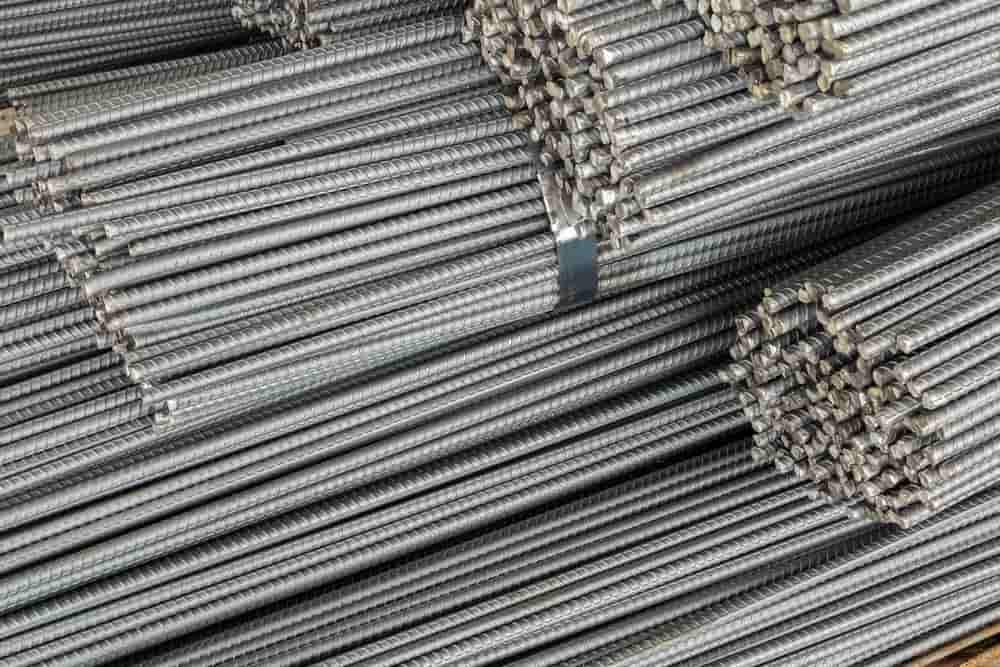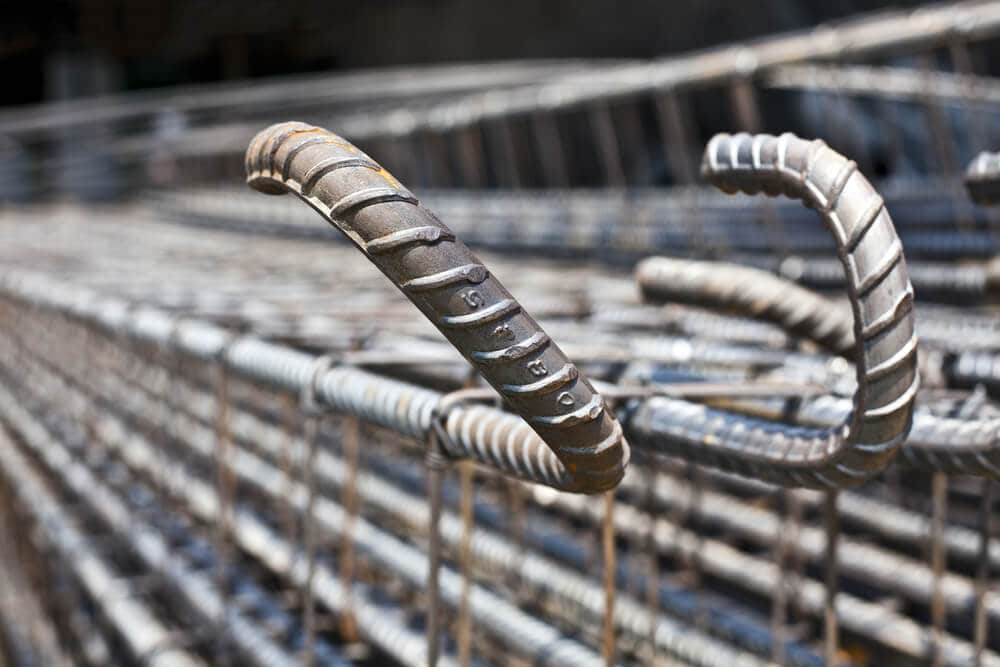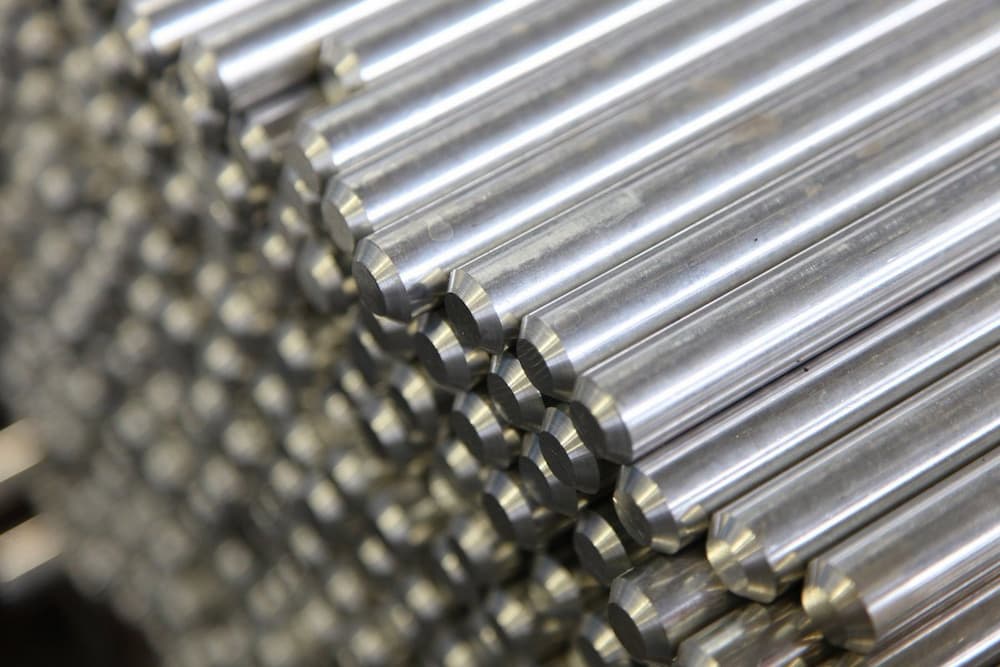international standards that steel rebars are made, are; the American (ASTM), the Russian (GOST), German standard (DIN), the British standard (BS), JIS (the Japanese standard), and some others that every country of having the technology of doing the “iron making” apply their own.
We are producing our steel rebars with the high demanded and best quality of the types. The size and types of the tmt bars are available with us with competitive prices on our table. Make the inquiry on the website filled to have connection with us.
Steel rebars are in high demand because we are well aware of the significant role that they play in the construction process. Rebars made of steel can be purchased in a wide variety of sizes and types; the prices of these rebars change depending on both of these characteristics.
The path that the price will take can be seen, for instance, in a chart that depicts the pricing of rebar. The phrase “per tonne” is the unit of measurement that is used in the trading of the item. The production of steel, which is an iron-carbon alloy in its purest form, is the primary focus of the steel industry, which consists of businesses that process iron ore.
In some instances, the business of producing steel also includes the processing of the metal into partially produced goods or the recycling of scrap metal into steel. Both of these processes are examples of circular economies. The search for metals that could be produced in shorter amounts of time and with less effort ultimately led to the development of the steel industry.
The second half of the 19th century was witness to enormous technological advancements in the production of steel, which played an essential part in the formation of modern economies that are dependent on trains, vehicles, girders, bridges, and a variety of other steel objects. These technological advancements played a vital role in the formation of contemporary economies that are dependent on steel objects.

rebar size chart pdf
We have made our catalogue of premium products available for downloading in pdf format on our website. Rebar sizes and types are listed in a chart for easy access.There are charts to get a price trajectory over time for the products that are generally altered over periods.
You may verify the rates for your order and there is no exemption in this situation for steel rebar. Rebar, short for reinforcing bar, is a steel bar used as a tension device in reinforced concrete and reinforced masonry projects to aid and strengthen the concrete under tension.
It is also known as reinforcing steel or reinforcement steel when it is massed. Concrete has an excellent compressive strength but a weak tensile strength. Rebar substantially enhances the structure’s tensile strength. A continuous series of ribs, lugs, or indentations are provided on the surface of rebar to increase concrete bonding and minimise the likelihood of slippage.
The most utilised rebar material is carbon steel, which is generally constructed of hot-rolled round bars with embossed deformation patterns. A concrete structural section reinforced with steel will experience little differential stress as the temperature changes because steel and concrete have comparable coefficients of thermal expansion.
Other commonly accessible rebar variations include composite bars comprised of glass, carbon, or basalt fibres as well as stainless steel-produced rebar. Additionally, an epoxy resin that is developed to survive the effects of corrosion, particularly when utilised in saltwater settings, may be put to the carbon steel reinforcing bars.
Bamboo has proven to be an effective substitute for steel reinforcing in concrete construction. These alternative kinds are typically utilised in specialised building when carbon steel does not match their physical criteria since it is more expensive or may have less desirable mechanical qualities.

steel bar sizes in mm
The typical steel bar sizes used by contractors range from 8 to 60 mm. The mild steel bars are circular in cross-section and have a smooth surface.
They are available in a range of sizes, starting at 6 mm and going all the way up to 50 mm. Some of the particular uses for them in concrete include dowels at expansion joints, where bars must glide in a metal or paper sleeve, contraction joints in roads and runways, and column spirals. They are easily cuttable and non-damaging when bent or chopped.
Since there is a poor bond between concrete and steel and problems with slippage and strength, mild steel bar is not recommended for use in the construction of structural buildings like bridges and other major structures.
Deformed steel bars contain ribs, lugs, and indentations on their surface, which lessens the primary issue that mild steel bar has with slippage and enables concrete and rebar to be bonded well.
Additionally, compared to mild steel bars, deformed steel bars have a higher yield strength. The tensile characteristics of this type of rebar are better than those of other types. The diameters of the pieces that make up these bars can range from 6 mm to 50 mm.

reinforcing steel types and specifications
To determine the type of steel rebar required for your projects, the specifications of the steel reinforcing bars must be examined. TMT bars are hot-treated, highly-strengthened bars that are used in RCC construction.
It is the newest member of the MS steel bar family, with the highest quality standards available on a global scale, as well as great features such as strength, ductility, weldability, and bending ability.
The properties of TMT Rebar:
- improved malleability and ductility, as well as high yield toughness and strength
- enhanced bonding power earthquake resistance
- Thermal resistance was increased due to corrosion prevention.
- inexpensive and safe to use
- There is no strength reduction at welded connections.
- Welding the joints is done with standard electrodes.
High Strength Deformed Bars: High strength deformed bars are cold-twisted steel bars with lugs, ribs, projections, or other surface deformations. It is commonly and principally used in construction for strengthening purposes. These bars are available in pieces or sizes with diameters ranging from 4 mm to 50 mm.
HSD Rebar Characteristics: HSD Bars feature a decreased carbon content, which improves their ductility, strength, and weldability.Superior bonding power – HSD bars are well-known for their remarkable bonding power when used with concrete.Welding prowess – Due to their lower carbon content, these bars offer 100 percent more welding prowess than normal bars.
High tensile strength: HSD bars are extremely strong. They come in handy for bending and rebending, which is common throughout the construction process.
A wide range of applications – These bars can be used to construct residential, commercial, and industrial constructions, as well as bridges.Minimum weight, maximum strength, and compatibility with compression and tension reinforcing It is sufficiently bendable.

steel bar sizes in mm and inches
Some of the information and the specs of the steel bars are listed in inch yet the size of the items that we describe on our articles is in millimeters (mm). Steel reinforcement is the term for steel bars that are added to regular cement concrete to create reinforced concrete. As a result, these structures are made of steel-reinforced cement concrete (R.C.C). Rebars are a common name for steel reinforcement.
Plain concrete is robust in compression but weak in tension. Steel reinforcement is used to give concrete buildings tensile properties. Both in tension and compression, the steel reinforcement is powerful. Concrete cracks under tension loads will be prevented and minimized by the tensile property offered by the steel reinforcement.
Steel reinforcement and concrete have comparable coefficients of thermal expansion because they experience similar temperature-related expansions. The concrete will be less stressed during temperature changes because of its feature. The steel reinforcing bars’ surface is patterned to create a strong bond with the surrounding concrete.
Steel and concrete are the two basic components that give concrete constructions their strength. The structural element will be combined from both materials by the design engineer so that the steel resists induced tensile and shear pressures and the concrete absorbs compressive forces.
There are primarily four types of steel reinforcement used in a concrete building. As follows:
- Bars of Hot-Rolled Deformed Steel
- Bars of Cold-Worked Steel
- Low-alloy plain bars
- Steel Bars for Prestressing
rebar construction
Rebar is one of the most frequently used steel products in construction. This type of steel reinforcing is available in sizes and types to suit your unique projects. The carbon steel kind of rebar is by far the most prevalent type, and it often takes the form of circular bars that have been hot-rolled and include embossed deformation patterns on their surface.
Because concrete and steel both have coefficients of thermal expansion that are equivalent to one another, a structural component that is built of concrete and reinforced with steel will only experience a minor amount of differential stress when the temperature changes.
Other varieties of rebar that are readily accessible include those made of stainless steel and composite materials like glass fiber, carbon fiber, or basalt fiber. It is also feasible to cover the carbon steel reinforcing bars with an epoxy resin that is designed to withstand the effects of corrosion.
This is a particularly crucial step to take when the bars are going to be used in regions that will be exposed to seawater. It has been shown that bamboo can successfully replace steel rebar as a reinforcing material in concrete construction. One example of this is the use of bamboo rebar.
Because these alternative types have a greater propensity to be more expensive or may have fewer mechanical properties, they are utilized more frequently in specialty construction where their physical characteristics fulfill a particular performance requirement that carbon steel does not provide. As a result of this, carbon steel is used less frequently in specialty construction.

difference between t and y rebar
Tensile and yield strengths are denoted by the letters T and Y, respectively. Due to how they affect steel rebar and its application, both of these are crucial. The distinction between those makes the outcomes of your work clear.
The term “rebar,” which is short for “reinforcement bar,” refers to a steel bar that is used as a tension device in reinforced concrete and reinforced masonry projects to assist in strengthening the concrete when it is under tension. When it is in a massed state, it can also be referred to as reinforcing steel or reinforcement steel.
The tensile strength of concrete is not quite as high as its compressive strength. The tensile strength of the structure is significantly improved by the addition of rebar. On the surface of the rebar, there is a continuous series of ribs, lugs, or indentations that are there to increase the bonding between the concrete and the rebar and to reduce the likelihood of slippage.
Carbon steel is by far the most common material for rebar, and it is often manufactured in the form of hot-rolled round bars with embossed deformation patterns.
Due to the fact that concrete and steel both have comparable coefficients of thermal expansion, a structural component made of concrete and reinforced with steel will be subject to a very little amount of differential stress when the temperature changes.
Other readily available forms of rebar include composite bars that are constructed of glass, carbon, or basalt fibers, in addition to rebar that is formed from stainless steel. In addition, it is possible to coat the carbon steel reinforcing bars with an epoxy resin that is designed to be resistant to the destructive effects of corrosion, particularly when applied in environments involving the presence of saltwater.

The use of bamboo instead of steel reinforcing in concrete construction has been shown to be an effective alternative. Because of its higher cost or possibly less acceptable mechanical properties, carbon steel does not match the physical requirements of specialized buildings, hence these alternative varieties are commonly used instead. The reason for this is that carbon steel cannot fulfill their requirements.
We know how to get in touch with the manufacturers, so if you want to buy steel ingots or something else they make, we can give you what you need.We have to point our clients in the right direction and give them the best quality of these things that we can.












Your comment submitted.